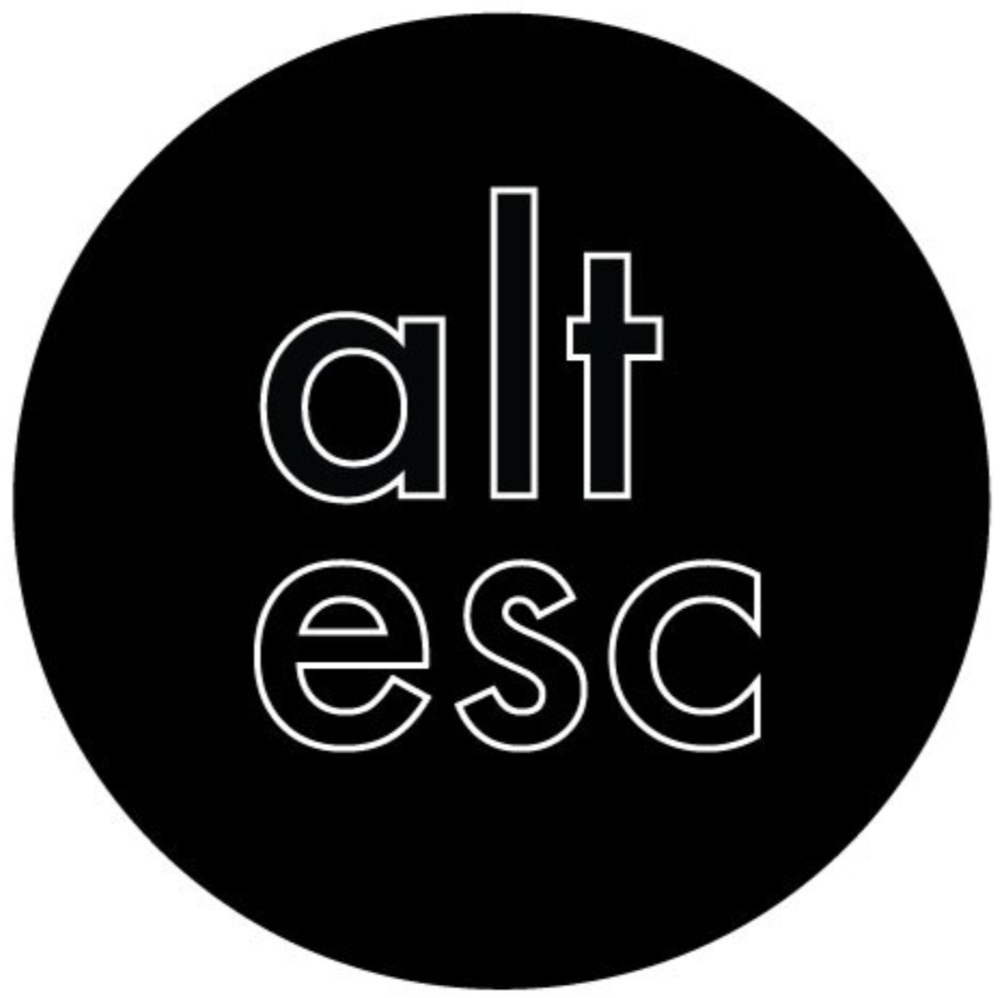RYAN OSKIN
Ryan Oskin is a New York based artist who synthesizes sculpture and photography to illustrate the relationship between man and nature. We met up with him at his residency at the Artha Project to learn more about his creative practice and fascination with construction materials. He is currently in the exhibition, “Piece by Piece,” at Pratt Institute. The opening reception is (tonight) September 29th.
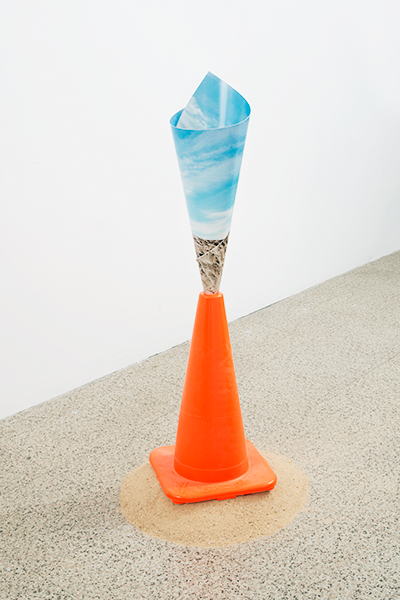
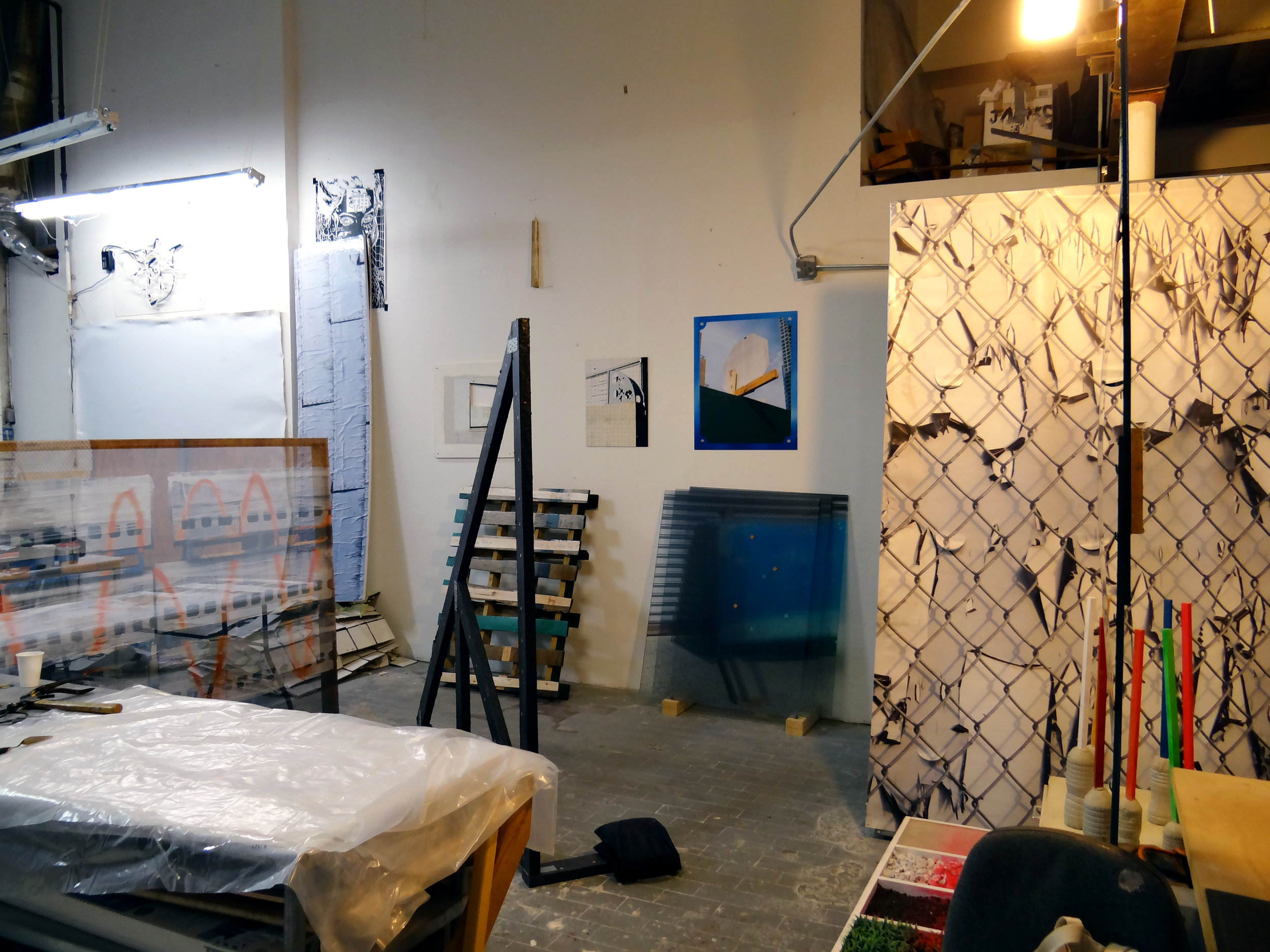
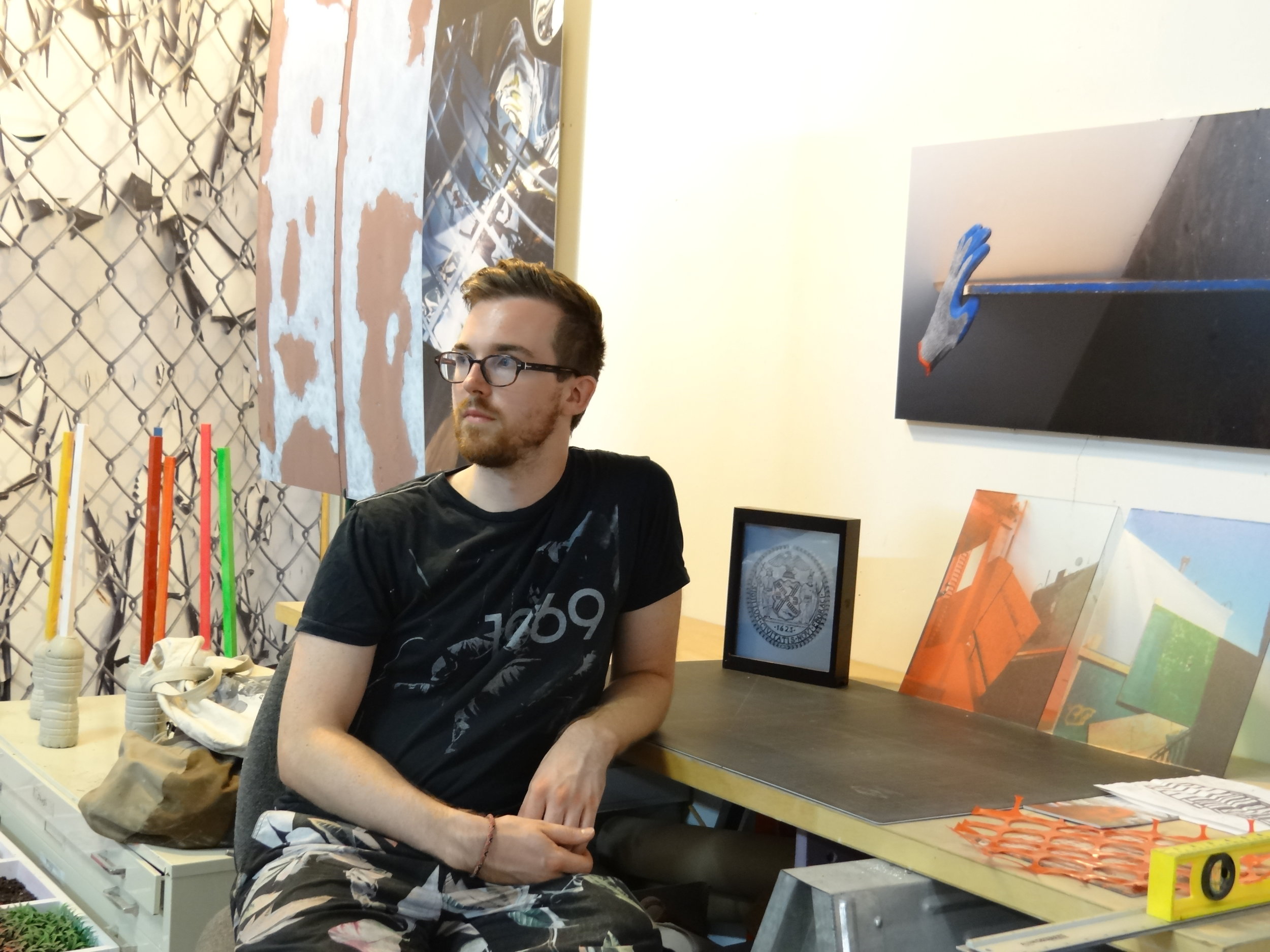
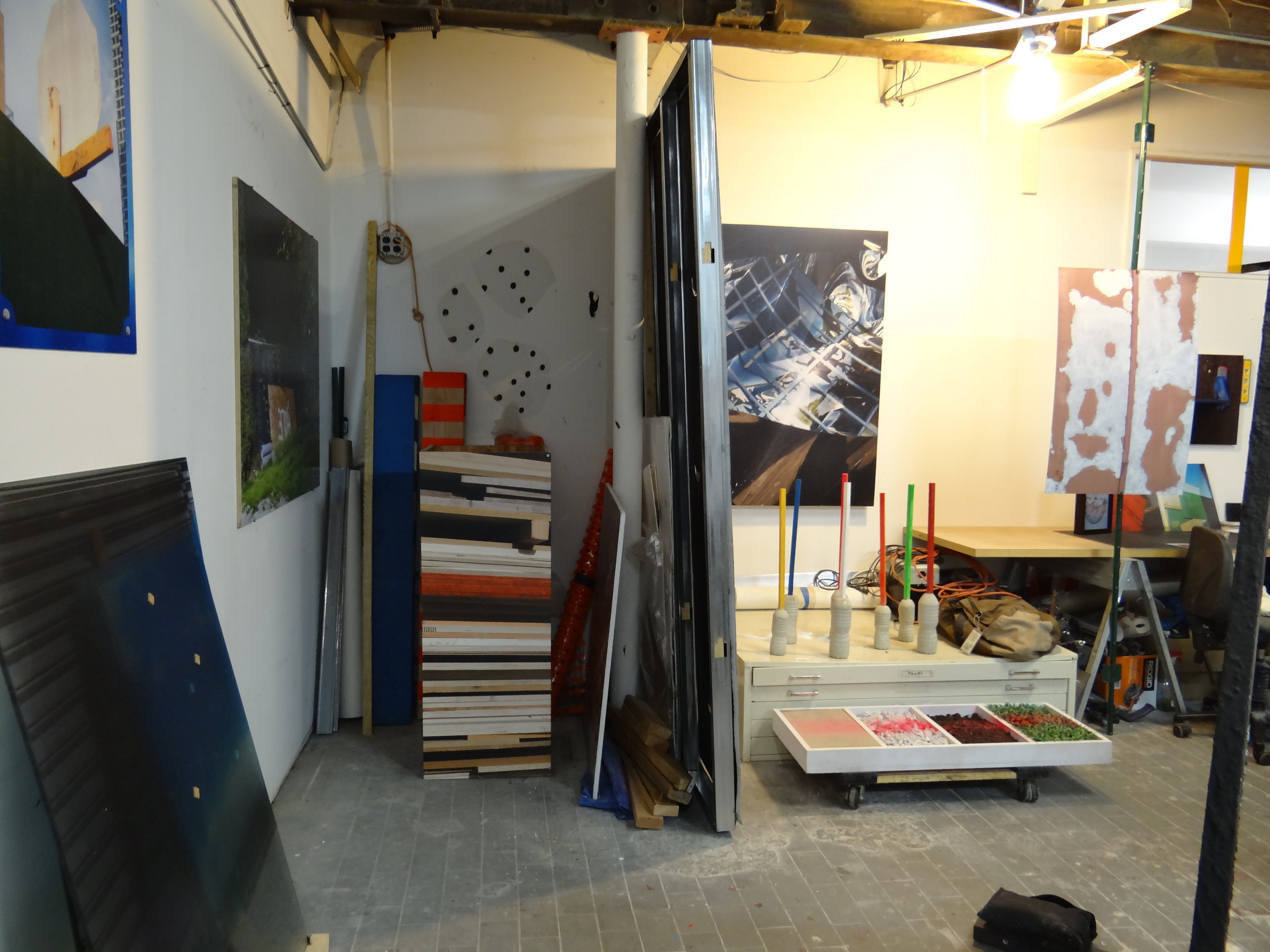
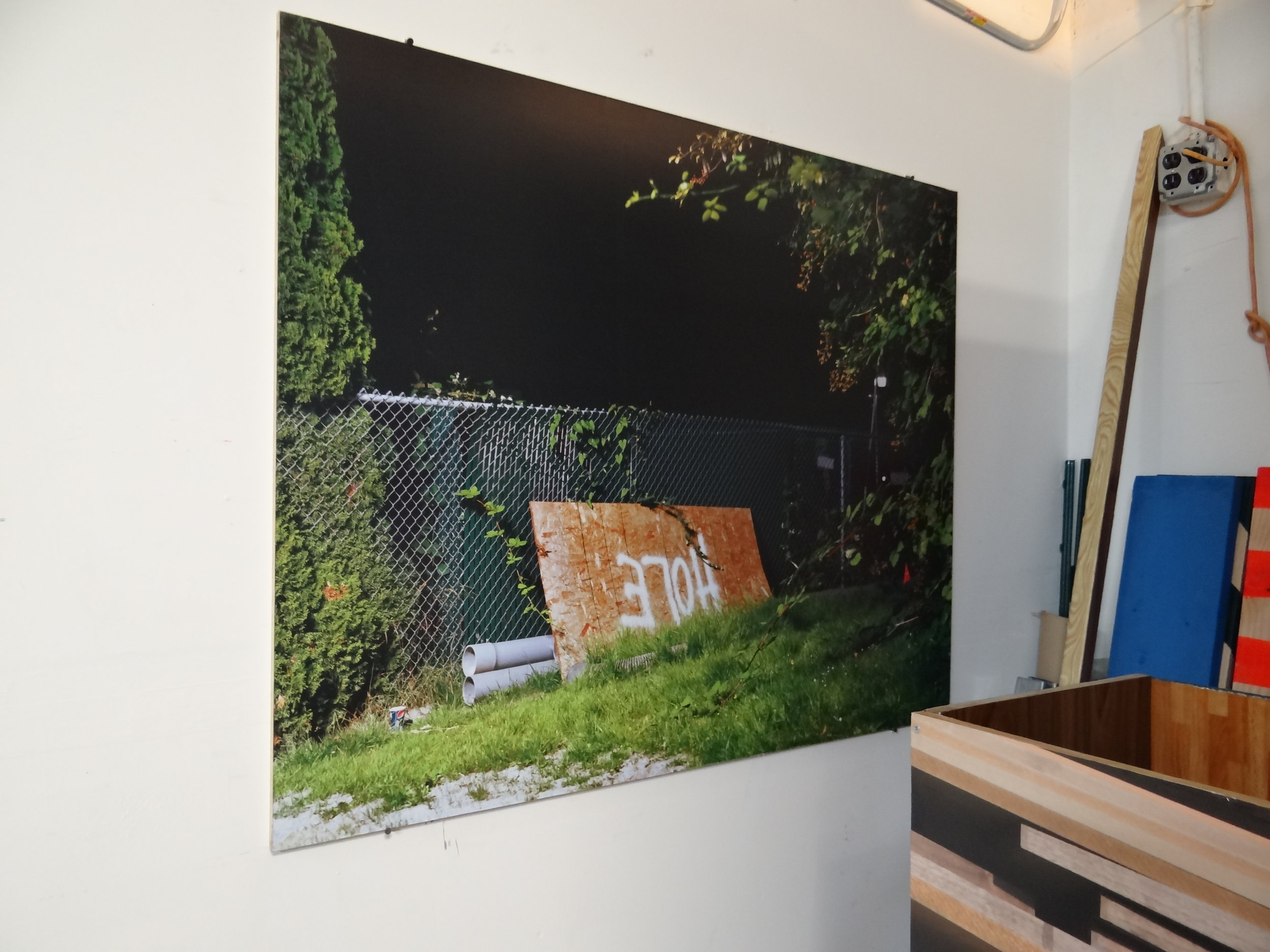

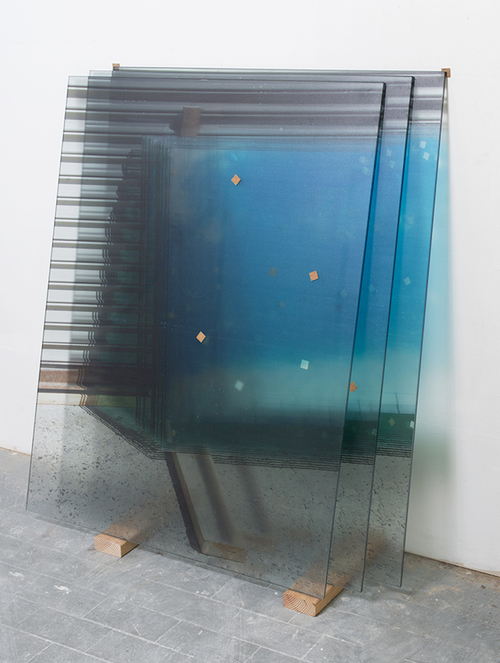

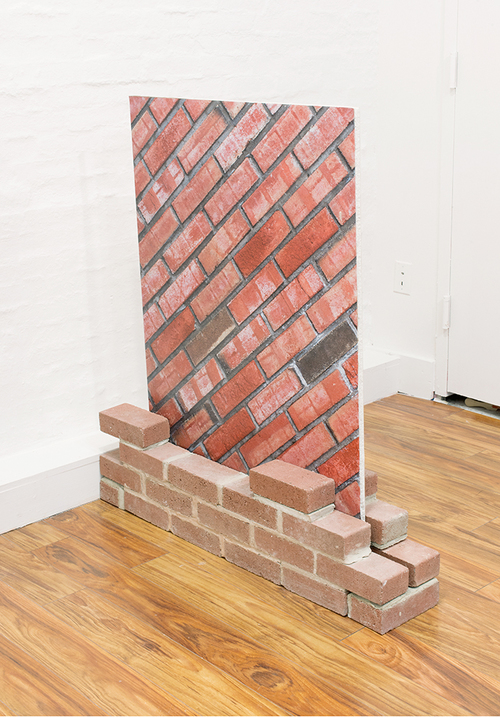
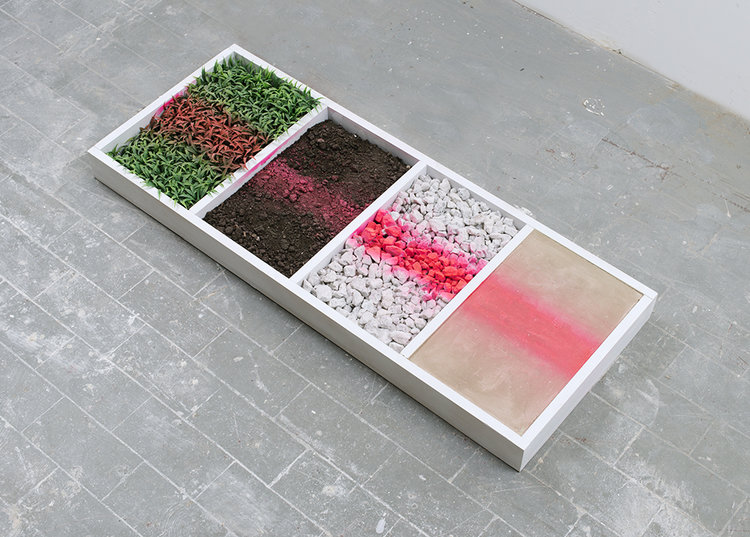
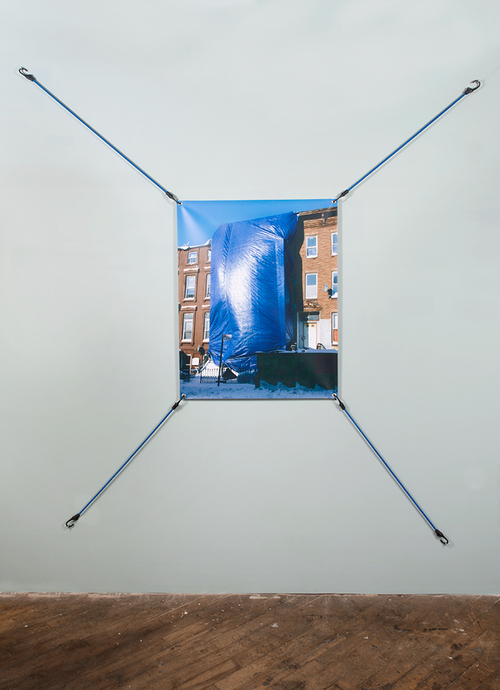


Are you coming to the end of your residency at ARTHA Project?
Yeah, the residency is a year long and it is ending at the end of this month. I have to find a new studio.
And you are just coming off of a group show at the Rubber Factory and a solo show, right?
I just had a solo show called "Five Facets" in August at The Java Project, which is located in a studio building in Greenpoint. They also have a backyard/loading dock space. I utilized the outside as a continuation of the inside works. This show was based on a project called “Under Construction,” which stems from documenting temporary work sites throughout New York. I use images of temporary structures and gestures made by laborers as a catalyst to make my own sculptures that involve these similar processes - like building a half brick wall. For “Five Facets,” the inside five pieces each reacted to the surfaces of the space. For example, "Stacked Glass" was leaning on the glass facade of the gallery. The pieces on the inside were reflecting on surfaces and the pieces on the outside were building new spaces from the open space. Thematically it all tied together.
Do you always consider the environments that you are working in when designing exhibitions?
This is the first time I had the opportunity to consider the architecture and make a proposal that was site specific to some extent, and I feel like my work is moving more in that direction. I am starting to consider the architecture of the space. I want to make more work that is an installation or site specific, because I feel like these work are so much about the transitions of these temporary sites and the sites of labor, these temporary spaces as they change from an empty lot to a building (or to something else.) I’m interested in exploring that gray area and building outwards. I am also interested in architecture but not in a permanent way, more so as a defining a gesture in the space. At the same time, each piece has to be successful on their own as well. My process is to flatten space and then bring it back out. There are a lot of options in that certain system.
What materials do you use? Where do you source them? How do you choose your materials?
It's a variety. A lot of the materials are referenced in the photographs. For example, this is a found wooden pallet, and it has a photograph mounted to the front of the pallet. It is spray painted green to mimic the green in the photograph. Through the fusing of the image and material, they become one rather than two separate entities. I am looking forward to expanding on that. I also want to explore materials that are not referenced in my photographs further.
You started out doing photography?
Yeah, I studied photography at Pratt Institute which has a traditional photo program. I took other classes, but at Pratt the division between disciplines was strict at the time. It wasn't as fluid of a program as Cooper Union where everything melds together. So once I graduated, I started going in a new direction.
When was your first jump into sculpture?
It was at my thesis show, and I didn't show it to anyone beforehand. It was a photograph that was printed on a rug. The photograph was of a porch, and there were letters across it that read “Welcome.” I was moving towards considering the photograph as an object to be experienced in the space rather than something that belongs on the wall. We are all used to seeing that sort of thing. It has a built in way we should respond to it. I am interested in breaking those roles in relationship to photography while also getting away from it all together by moving to sculpture.
What is "Material Progression"?
This piece is a continuum of materials. It is a white display box filled with various materials that represent stratas of earth. This line connects them, but it doesn't flow one way or another. They lay on top of each other, breaking down into the other materials. I wanted to let the material speak for itself, but it's also important to emphasize that they having a container to live in. I was attracted to a source image online while googling what utility marks mean.
What does pink mean?
Temporary survey. So it is used when they are marking certain spaces, but it is not a solid one thing or another. For example, marking out a rectangular on the sidewalk that will be torn up. Pink is associated with femininity (for some reason,) and I think it is a nice offset because these things tend to be masculine, and I am not interested in that conversation of this or that. It is more interesting to have them co-exist.
What is the piece "Survey Stakes" about?
In the same way laborers use the pink to demarcate certain areas, they use the stakes to communicate about space. They mark if there is an area that needs to be built up. Green means water supply. Blue is potable water. Orange is communication lines. Yellow is electricity lines. So basically, I was appropriating that language and color usage as markers that could be spread out in a space or that reference something outside of the space they are shown in.
Now that you are working with these objects do you see them around the city more?
I've noticed the stakes by the Manhattan Bridge. They are reconstructing the right side of the bridge on the Canal side. I normally see them outside of New York. These things you can just pass by. They mean nothing to most people. If you walk around the city, you can see these subjects repeat, and it is interesting to see that in the work and then re-experience it in the world. It re-animates the concepts I am working with. It's a utilitarian language. We are surrounded by all these gestures that mean other things, or point to other systems at work.
Are there specific places in the city you go to find inspiration?
I lived in Bed-Stuy near Bushwick. There is a lot of construction there. There are a lot of condos being built right now, so I started there. There are so many industrial hubs in NY - Sunset Park, industrial Greenpoint, Gowanus. A lot of these zones are now being transformed into livable space. I’m curious about neighborhoods that are in between being residential and manufacturing industries.
Where are you from?
Born in California, but I don't remember anything. I grew up on Long Island and New Jersey. The suburbia surrounding New York.
Do you curate?
I have done a bunch of shows with Lauren Zaser, Cait Oppermann, Bobby Walsh, and Yael Malka that I studied with at Pratt under the platform, TGIF. We started at the 17-17 Troutman building in Bushwick. We used it as a studio 90% of a time, and then once a month we had a pop-up show. And then we got kicked out of that space. It was mostly a studio but there were openings, and the landlord did not want strangers in the building. We did more pop-up shows at various spaces like one at South Street Seaport two years ago in the shipping containers. The last one was at a space that was demolished recently. It was called Kilroy Metal Ceiling. It was a group show (“Treading Water”) of photography and sculpture. I've always been interested in putting shows together.
What is "Dreams Catalog"?
That is a funny project. I started that after I graduated. The source imagery is from a Hasidic Jewish auction catalog. It was just laying in my old apartment, and I was like, "What is that?" I started flipping through it, and it had all these children used as props to sell things. For example, a baby was riding a plane in one of the images. I started cataloging these images and using the found text in the catalogs to create an alternative auction catalog. I printed these images on other objects and re-commodified the children in a way. It was a fun project to do, but it seems out of place now in my practice. I finished it in 2013, and I still show bits of it in certain spaces.
What's the story with "ELOH"?
This one sticks out from the other ones because it was shot at night. It is remnants of a construction site in Seattle. You know how on highways you sometimes see the huge lights on the side of the road? This one was just pointing at some left over materials. It was so incredibly lit. I was interested in the sign because it said "Hole" backwards, and then behind it there was just a black hole of the sky. I think this was the beginning of the construction series. This photo was taken in 2012.
How do you print on these materials?
I use a commercial printing company in Bed-Stuy that can print on different substrates. That is an inspiration in itself. I’m always asking myself, “what can this image be printed on?” By printing on more commercial materials, they usually have more longevity. Images are so fragile. They get ruined easily, so this way you can manipulate them a little bit more, getting away from the perfect, framed image.
Do you have any shows coming up?
I just had two shows that opened. One is at the Rubber Factory called "n e w f l e s h" and the other is an exhibition at Pratt Institute as part of their alumni month called Piece by Piece that is open until October with an opening reception on September 29th. Mostly I'm making new things right now.
Artists you are excited by?
I like the work of Ethan Greenbaum. He had a show at Kansas Gallery that resonated with me about six months ago. Also the work of Letha Wilson, Katie Steciw, and Gordon Matta-Clark.
